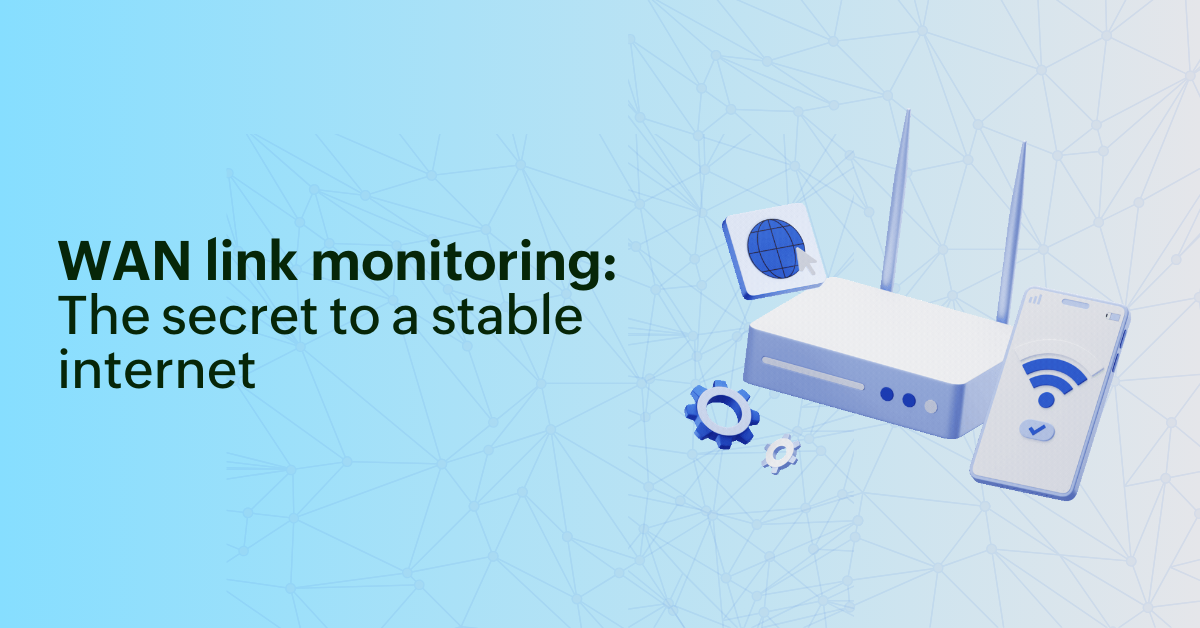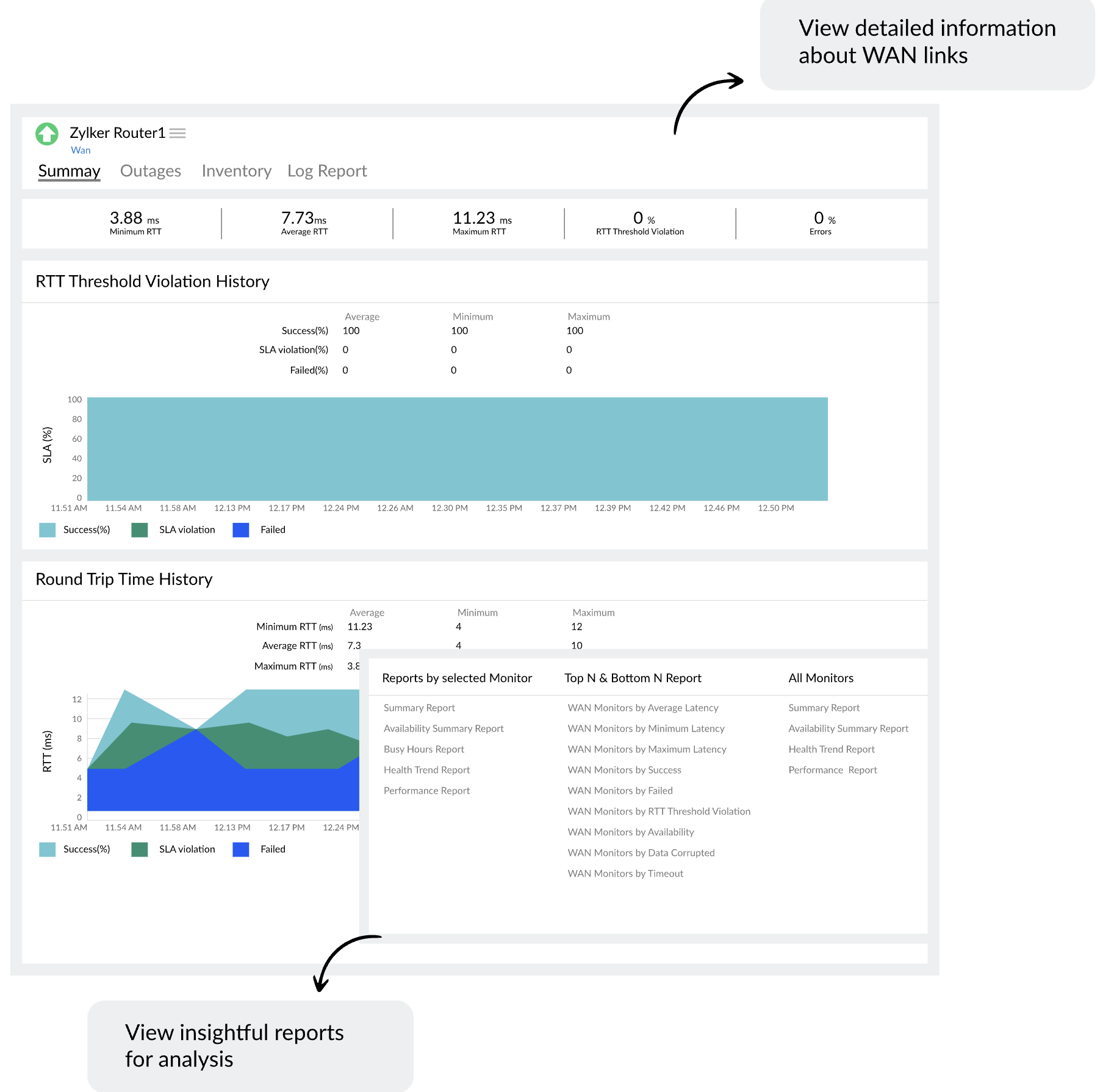The secret to a stable internet: Why monitoring WAN links is essential

What are the different kinds of WAN links?
If your business runs on the internet (which, let’s face it, every business does these days), then your wide area network (WAN) links are its lifeline. Think of WAN links as the invisible bridges connecting your branch offices, cloud applications, data centers, and remote employees to the resources they need. The entire operation suffers when these bridges become unstable or congested.
So, what kind of WAN links do organizations rely on?
- Multiprotocol label switching (MPLS): The gold standard for reliability, MPLS offers dedicated connections with predictable performance but can be expensive.
- Broadband internet (DSL, cable, fiber): Widely used for cost-effective connectivity but prone to fluctuations in speed and latency.
- Cellular networks (4G/5G): Useful for backup or mobile applications but may experience inconsistent performance based on network congestion.
- Satellite internet: Ideal for remote locations but comes with high latency and bandwidth limitations.
- Software-defined WAN (SD-WAN): A modern approach that dynamically routes traffic over multiple link types for better performance and cost efficiency.
Each link type has its strengths and weaknesses. Still, without proper monitoring, even the most expensive connections can fail at crucial junctures, like when a customer is trying a UPI transaction and lead to a loss of revenue and trust.
Why WAN link monitoring is vital
Your team is in the middle of a crucial video conference with a client, and suddenly, the call drops. Or your cloud-hosted CRM becomes sluggish, frustrating employees and slowing down sales. These issues can cost your business in more ways than one.
WAN link monitoring helps keep your network reliable by:
- Detecting issues before they escalate – Instead of waiting for users to report problems, monitoring tools provide real-time alerts when links degrade.
- Optimizing bandwidth usage – Is network congestion the cause of slowness? Bandwidth monitoring helps you identify bandwidth-hogging applications, which in turn gives you insights on how to balance the load.
- Tracking SLA compliance – Service providers promise uptime and performance, but do they really deliver? WAN monitoring helps verify if they are meeting their commitments.
- Improving troubleshooting efficiency – Quickly pinpoint whether the issue is with the ISP, the internal network, or a specific application, reducing downtime.
Key metrics for WAN monitoring
Monitoring your WAN isn’t just about checking if it’s UP or DOWN. You need to track the right metrics to maintain a high-performing network. Here are some of the critical metrics:
- Latency: The time it takes for data to travel from point A to point B. High latency means slow applications, jittery VoIP calls, and frustrated users.
- Packet loss: Missing data packets can lead to broken connections, slow file transfers, and poor video quality.
- Jitter: Variations in latency can affect real-time applications like voice and video conferencing.
- Bandwidth utilization: Understanding how much of your available bandwidth is being used helps prevent congestion and keeps mission-critical applications running smoothly.
- Uptime/downtime: A historical view of link availability helps assess network reliability and ISP performance.

SaaS monitoring solutions for WAN link management
Traditional monitoring methods often involve complex hardware setups and tedious configurations. However, with cloud-based SaaS solutions like Site24x7 WAN monitoring has become much simpler.
Here’s why businesses are moving towards SaaS-based WAN monitoring:
- No infrastructure hassles: Get up and running quickly without investing in expensive on-premise hardware.
- Access from anywhere: View network insights from a centralized dashboard, whether you’re in the office or on the move.
- Smart alerts: Receive intelligent notifications when performance drops so IT teams can take action before users are impacted.
- Automated troubleshooting: Drill down into root causes with detailed analytics and performance reports.
- Multi-provider monitoring: Compare multiple ISPs and links to make data-driven decisions on network optimization.
Conclusion
In Gen Z lingo, rock-solid internet is a must—no lag, no drama. Whether your business uses MPLS, broadband, SD-WAN, or a combination of these, continuous monitoring is the key to maintaining a high-performing network. By leveraging WAN monitoring tools like Site24x7, which can monitor any network, you can gain real-time visibility, proactively manage issues, and keep your business connected when it matters most.
So, are you monitoring your WAN links yet? If not, now’s the time to start!
Comments (0)